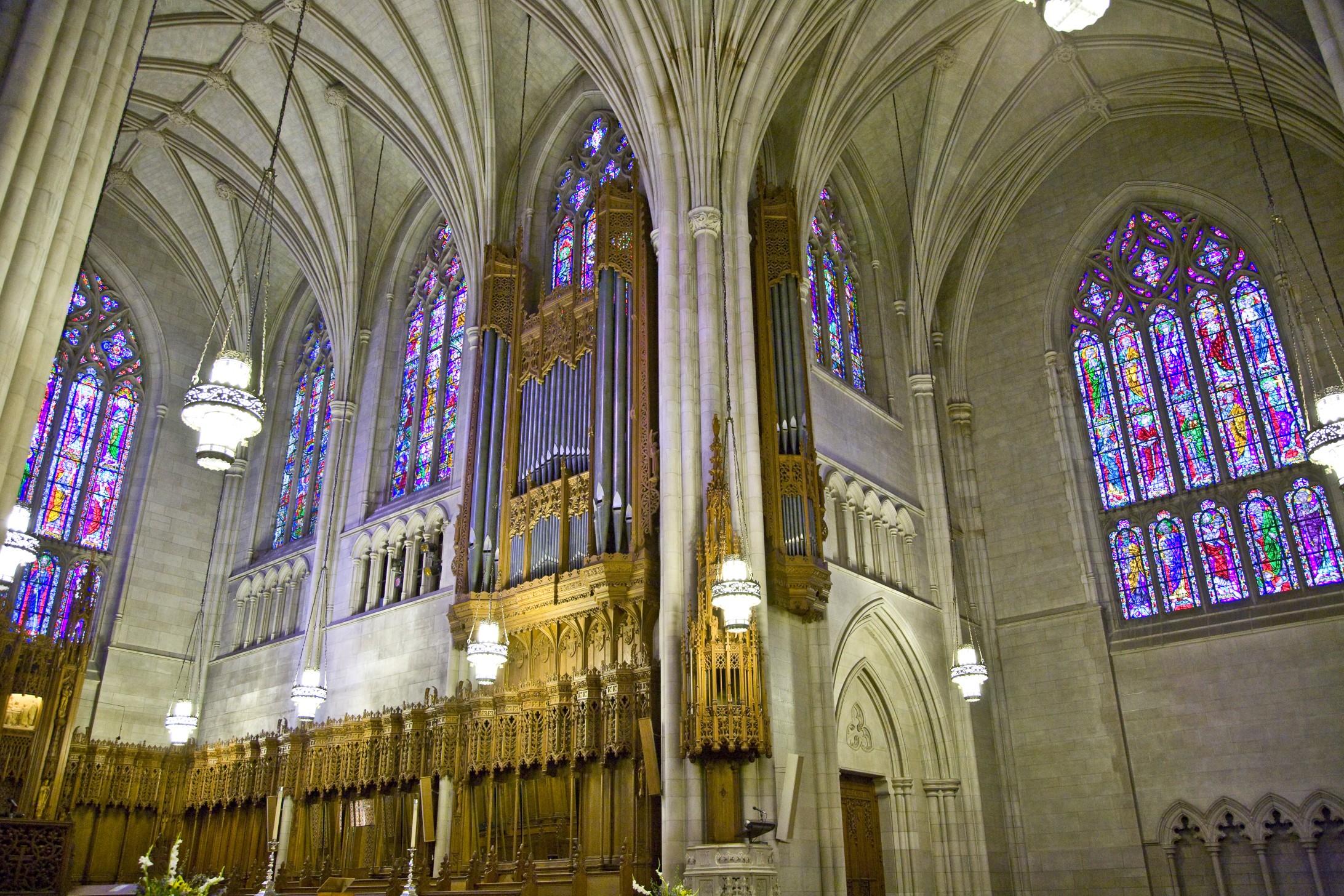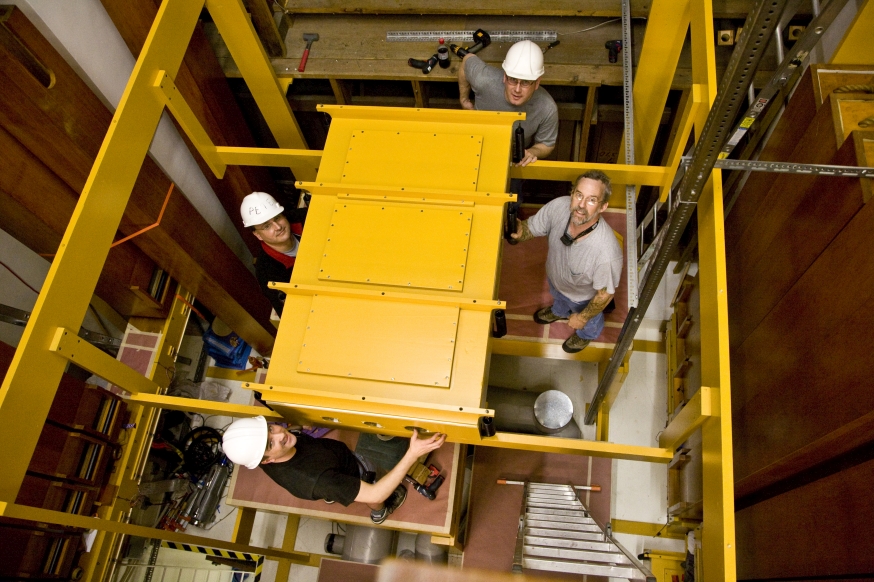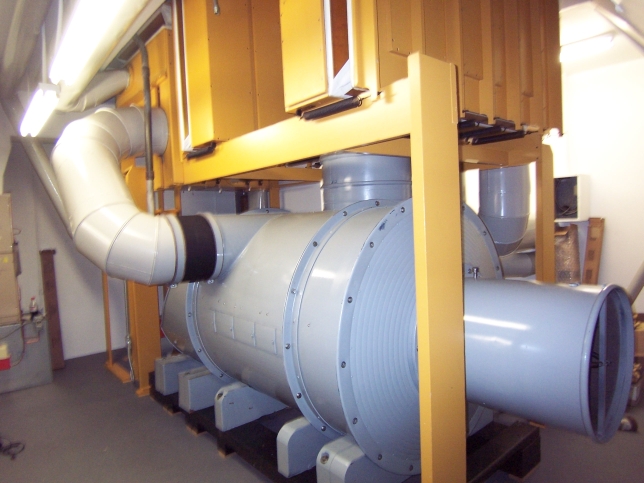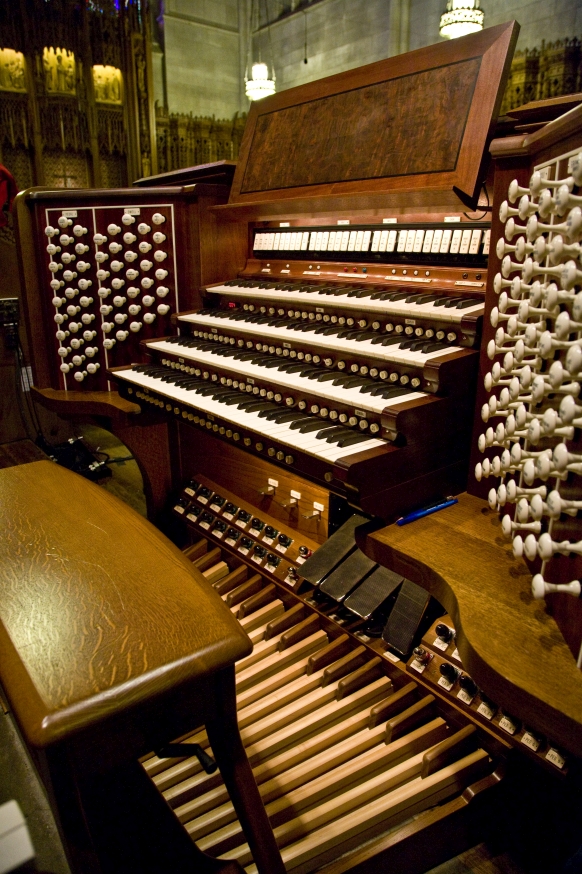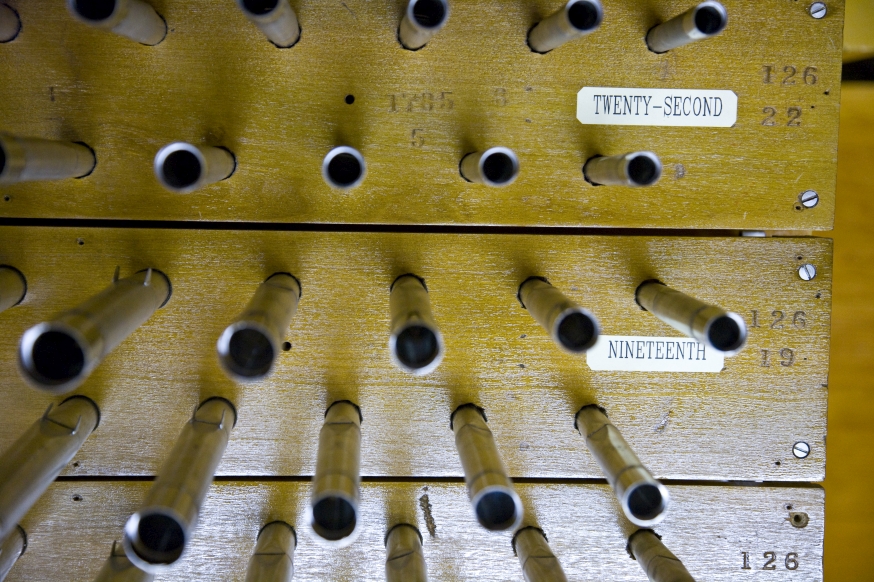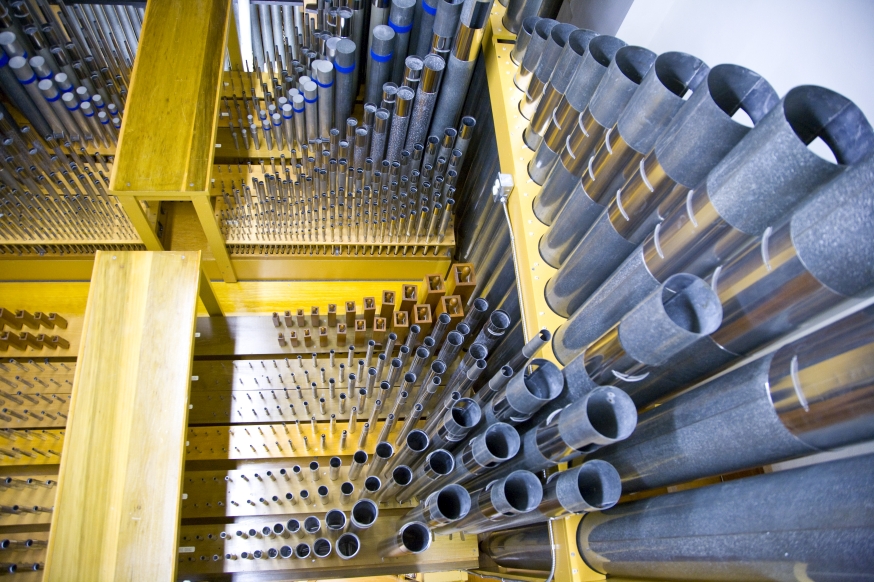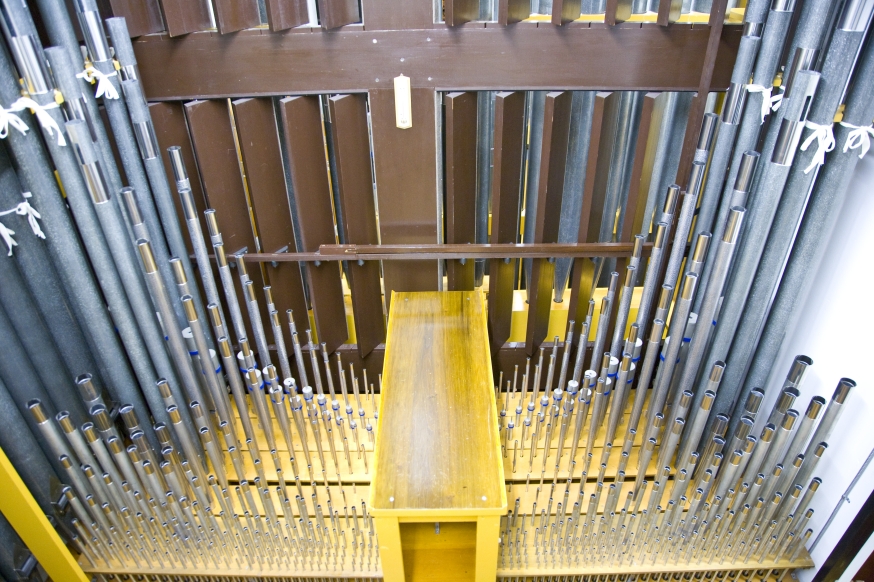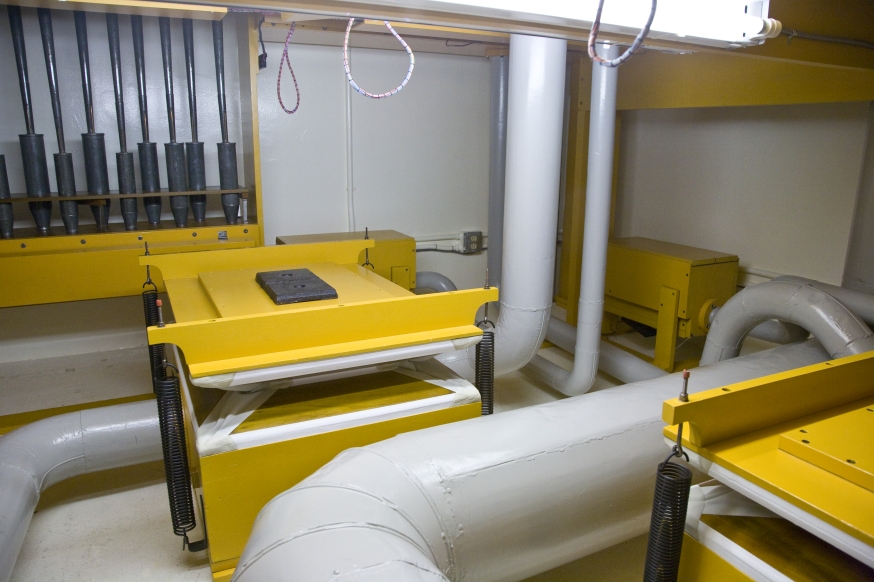Over the years, the special talents of Duke’s organ curators kept Aeolian Opus 1785 sounding quite presentable. But with an organ of this age, problems inevitably began to outpace what repair alone could accomplish. In 2005, we were approached to offer a quotation for complete restoration. Our initial excitement became a bit tempered as we dug deeper into the logistics of the task at hand. The organ’s heroic sound was created by an equally heroic chassis and every last piece needed to come to our Connecticut shops. Merely erecting and dismantling the scaffolding took a day’s time for our crews. The pipes of the transept-facing case-fronts were removed. Organ equipment was then carefully wrapped and slowly rigged out and down to the floor through the open façades. Removal took four weeks for five of our technicians. Merely dismantling the largest of the three blowers took a day in itself.
One of the glories of Duke Chapel is that it is difficult to drive to; limited vehicular access brings people to the Chapel on foot, a noble element of the architectural design. For our crew, however, that detail put 348 steps roundtrip between scaffold and truck. All these parts and pipes—some approaching the size and weight of telephone poles—were walked or dollied the length of the chapel and across the plaza to waiting trucks. By the time all was wrapped and tucked on board, we figured that each of our techs had walked approximately sixty miles —no fear of gaining weight on this job! Once the chambers were empty, university crews entered to repair and paint all the walls, ceilings and floors.
In Connecticut, each division was stored separately so that reinstallation could begin as sections were completed. Tests showed that the Aeolian action required special pitmans and careful leather selection to make its thousands of valves open and close with the best possible articulation. Special consideration was given to the organ’s high pressures as these place additional stress on all those leathered diaphragms moving within the chassis. Thousands of pouches, hundreds of feet of leather (there are 25 bellows), nearly 10,000 tiny leather nuts and thousands of feet of gasket material and felt went into the reconditioning process. Nearly 100 pounds of hot hide glue was used to bond all these materials.
The organ’s 6,700 pipes range in size from the heavy zinc thirty-two-foot Bombarde (16″-diameter at low CCCC,) to the typical hundreds of pencil-size trebles. Each metal pipe was tub washed and scrubbed. Many broken seams were discovered and resoldered. Where appropriate, pipe exteriors were coated with clear shellac to help protect against corrosion and the effects of future handling. All wood pipes were cleaned and re-shellacked to renew their appearance. In addition, some of these 400-pound “trees” had developed cracks on their back sides, some rather serious. All had to be routed out, then inlaid with wood splines to seal them properly.
One of the most involved tasks of pipe reconditioning is restoring the tone itself. Over time, pipes tend to be affected by metal fatigue, dirt and dents. Our voicer, Milovan Popovic, spent months listening to and adjusting each pipe on the voicing machine. Our goal was to return the organ to its 1932 condition, reversing the changes of the late 1940s and evaluating any other alterations we felt had been undertaken over time to boost treble, bass or overall timbre. Except for a swap in the chest locations of the First and Second Diapasons, the various exchanges that had occurred in the Great were reversed. Evidence was uncovered that strongly indicated these two Diapasons had been swapped during the original installation and therefore we chose to keep both as we found them.
One of the distinctive features of Aeolian’s chorus reeds is that they have both more fundamental and more fire than those of Skinner in the same period. Indeed, few reeds make a statement as firm, penetrating and loud as these. Each of the organ’s 19 reed stops were completely rebuilt and returned to its original magnificence. The Tuba Mirabilis, the reed that caps the ensemble of full organ, had been relocated outside the Solo box. It was returned to its original enclosed position where its power can be better controlled by the organist. Sheer authority and volume are now created by a new Festival Trumpet installed in the exposed Great and also on 25” pressure.
As each division was completed, it was erected and played at our shop, allowing us to troubleshoot and hunt down any problems in the convenience of the workplace. We measure the tensile strength of each reservoir spring. This makes for perfectly level reservoir heads and therefore promotes the best possible tremolo response. After testing and chip tuning, the division’s pipes and mechanism were wrapped and shipped back to the Chapel where the process of reinstallation reversed that of removal —including another 60 miles of walking. When the entire organ was installed, we began the many weeks of on-site tonal regulation, concluding with a week-long tuning session. The total job took 20 months and was completed in October of 2008. The rousing rededication concert on February 8, 2009, was shared by Chapel organists Robert Parkins and David Arcus and performed to a full chapel.
Many are aware of how close this organ came to losing its life. The Aeolian is now truly saved, and sounds forth beautifully into the resplendent Duke Chapel. We are so honored to have played a role in the process, and could not have done it without terrific teamwork and the help of the following people:
